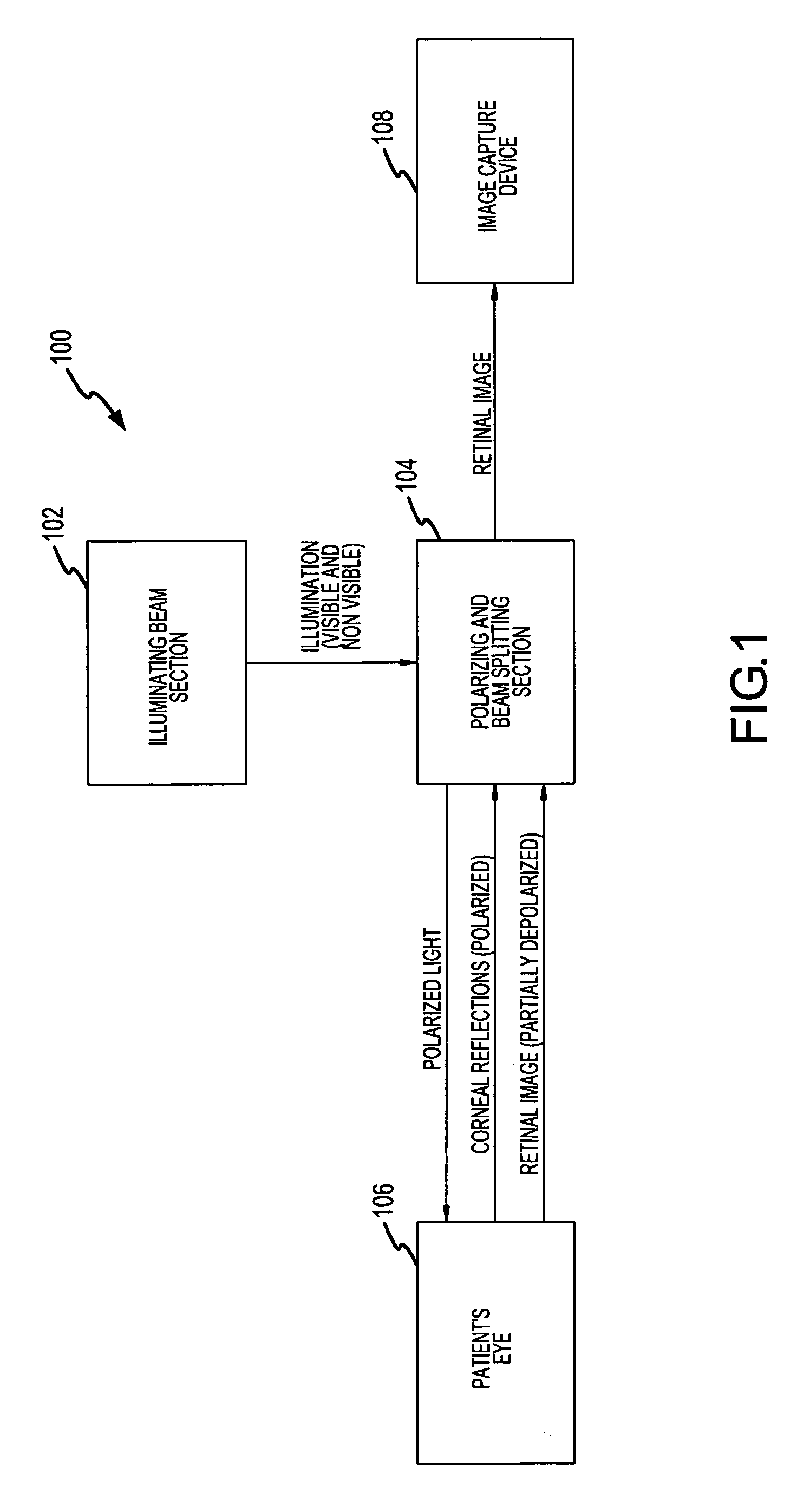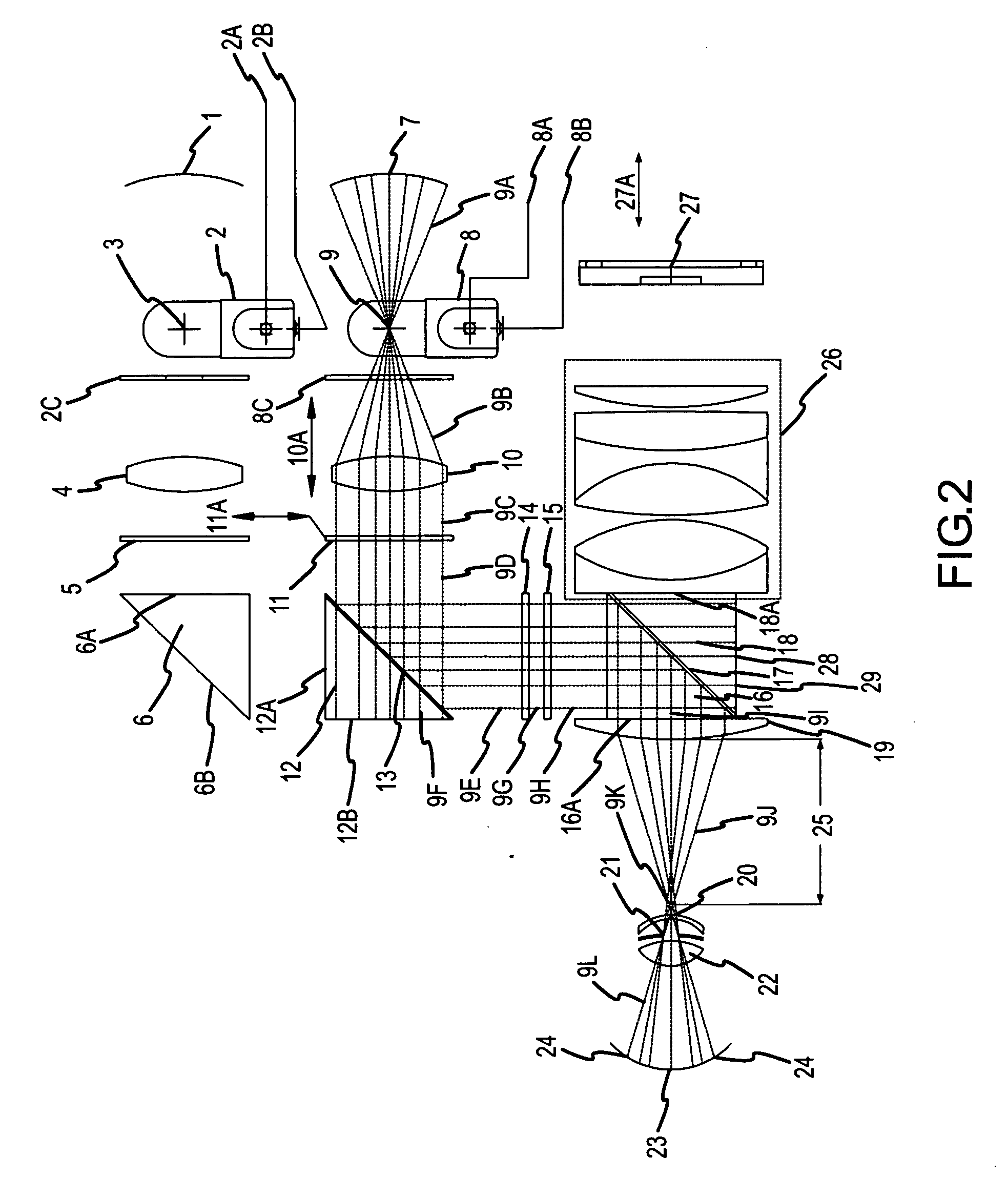Hand held device and methods for examining a patient's retina
a technology for examining the retina of patients and hand-held devices, which is applied in the field of hand-held devices for performing retinal examination of patients' eyes, can solve the problems of preventing patients from being able to drive, work, and patients' discomfort in light, and achieves high resolution
- Summary
- Abstract
- Description
- Claims
- Application Information
AI Technical Summary
Benefits of technology
Problems solved by technology
Method used
Image
Examples
Embodiment Construction
[0065] According to one embodiment of the present invention, disclosed herein is a hand held device for examination of a patient's retina. Embodiments of the present invention permit a doctor to examine the retina of a patient without the use of mydriatic eye drops and therefore without dilating the pupils. As will be described below, some embodiments of the present invention use a combination of infrared (IR) and visible light, along with various optical techniques, to capture images (such as static still images and dynamic video images) of a patient's retina. Embodiments of the device and methods may be used to examine patient's eyes, such as the retina of a human or an animal.
[0066]FIG. 1 illustrates a block diagram of an example of hand held device for examining a patient's retina, in accordance with one embodiment of the present invention. An illuminating beam section generates visible or non-visible light beams or light rays having desired spectral content that can be used, a...
PUM
 Login to View More
Login to View More Abstract
Description
Claims
Application Information
 Login to View More
Login to View More - R&D
- Intellectual Property
- Life Sciences
- Materials
- Tech Scout
- Unparalleled Data Quality
- Higher Quality Content
- 60% Fewer Hallucinations
Browse by: Latest US Patents, China's latest patents, Technical Efficacy Thesaurus, Application Domain, Technology Topic, Popular Technical Reports.
© 2025 PatSnap. All rights reserved.Legal|Privacy policy|Modern Slavery Act Transparency Statement|Sitemap|About US| Contact US: help@patsnap.com



